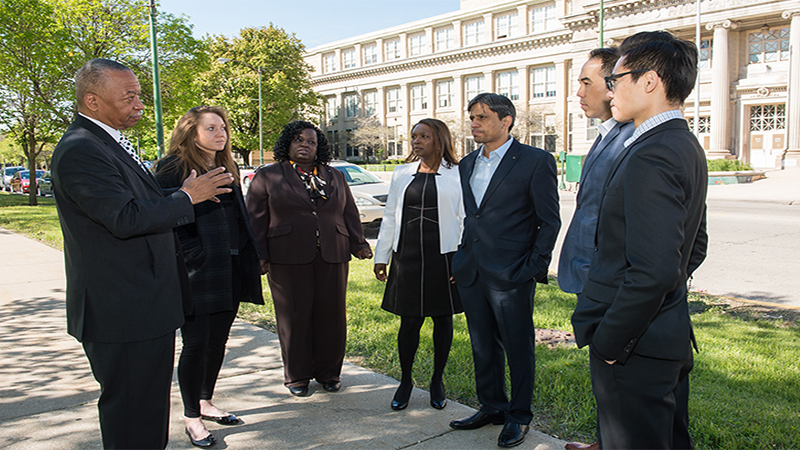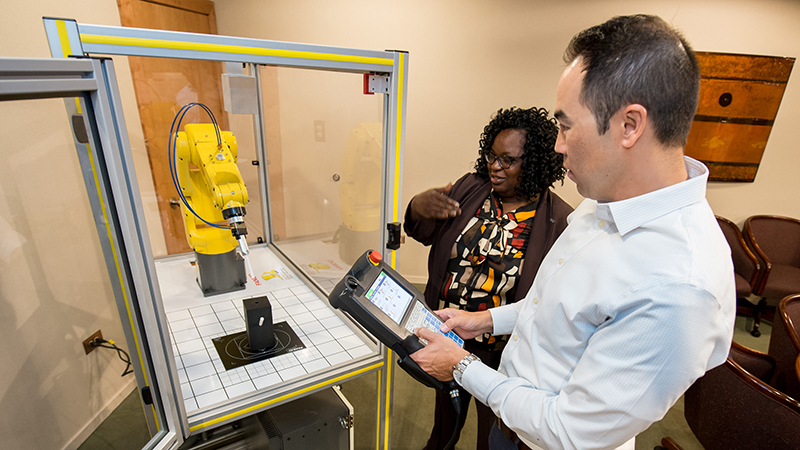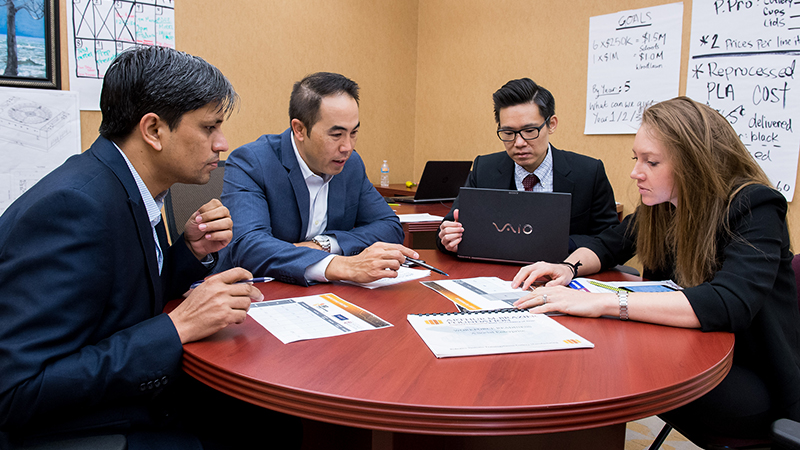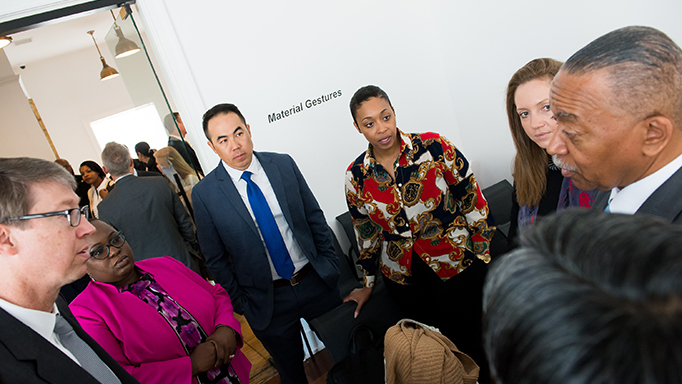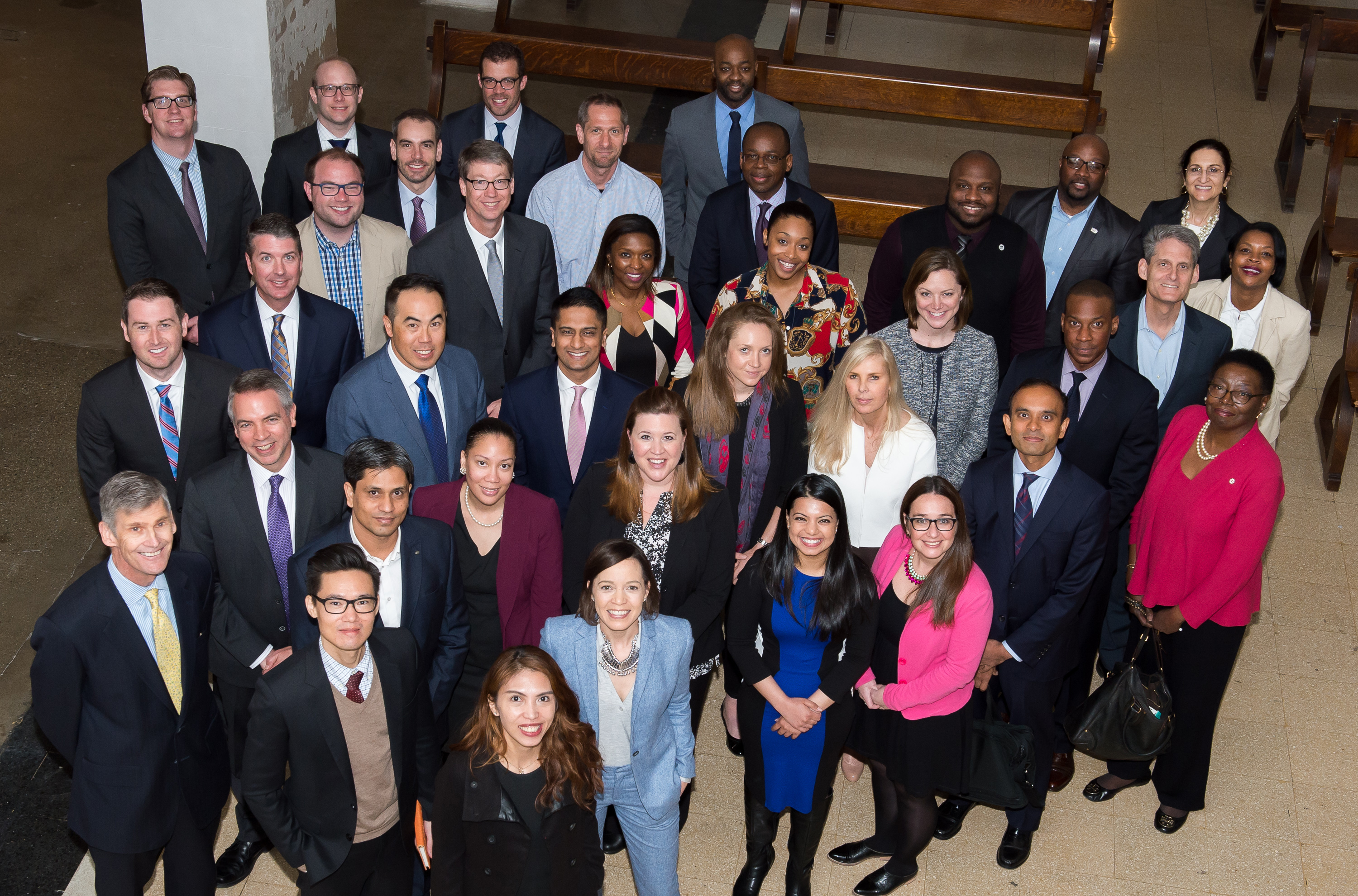BSD Industries resident engineer, Trista Bonds is teaching Tony how to move a 6-axis industrial robot. These machines will be used to train Woodlawn community members to ready them with skills for high-quality and in-demand jobs.
However, upon arrival at BSD, the team quickly realized that there was a gap between initial project expectations and BSD’s current business position. Before they could help BSD expand and improve operations, they needed to ready them to launch their yet-to-begin operations. This would require pivoting their focus to critical sales goal setting, financial planning and risk analysis to make that happen.
"We quickly realized that we were essentially working with a non-profit in startup mode," shared Chopp. "We underestimated what they needed from us most – financial modeling knowledge and plans for driving revenue." This led Tony and his team to regroup. They had to assess how their skill sets could best help BSD achieve its launch goals and ultimately bring jobs and revenue to its local community.
It was humbling, watching their scope of work shift dramatically during those first few days as they gained an understanding of BSD. They dug in, meeting with BSD’s two full-time employees to get the information they needed to unearth where they could truly make an impact. "We weren’t going to walk away," Chopp declared. "This was an organization with two full-time employees wearing 15 hats each. There were four of us and we were going to figure this out."





